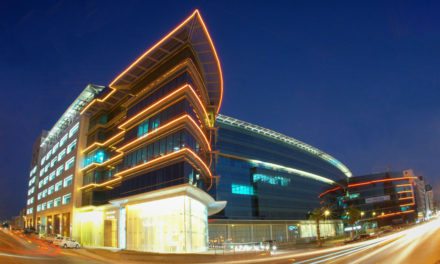Located on a 118-acre tract of land in Virginia Beach, Virginia, is the Chesapeake Bay Foundation’s (CBF) Brock Environmental Center. Beautifully clad in naturally durable cypress, the 10,500-square-foot facility supports the CBF’s advocacy, education, and restoration initiatives to preserve one of the nation’s most valuable natural resources—the Chesapeake Bay—and raises the bar for sustainable buildings everywhere.
Designed by SmithGroupJJR, one of the largest architecture firms in the U.S., the Center was built to showcase technologies and building products that contribute to net-zero energy, water, and waste. According to project manager and design architect Greg Mella, FAIA, LEED AP, preference was given to natural materials, such as cypress, to reinforce a sense of place.

Chesapeake Bay Foundation’s (CBF) Brock Environmental Center in Virginia Beach, Va. Photo: © Dave Chance Photography
“We specified cypress for many reasons,” Mella said. “Aesthetically, we love the variation and richness the wood provides. Environmentally, we were able to reclaim and repurpose sinker logs which had been at the bottom of southern bayous and rivers for 100-1000 years, because they were previously considered waste. The Center showcases a lot of salvaged materials—all with a story behind them, adding to the project’s theme of environmental stewardship.”
The design team was looking to select bio-based materials, rather than synthetic and chemical-based ones, but because of the project’s location, product performance in a coastal setting was an important consideration in material selection.

Chesapeake Bay Foundation’s (CBF) Brock Environmental Center in Virginia Beach, Va. Courtesy of Chris Gorri
“Cypress contains a preservative oil called cypressene, which makes the wood naturally resistant to rot, decay, and insects,” Mella explained. “Given its natural durability, we clad the exterior walls in 7,800 square feet of shiplap cypress, finished with a stain to provide protection from ultraviolet light and to give the wood a rich, warm tone.
“One aesthetic goal of the project was to blur the lines between exterior and interior, so there are some locations where we literally brought cypress inside, using it for paneling and as a fascia to the lobby reception desk,” Mella added. “Consistent with our goals of eliminating waste, we used the cypress scrap pieces to make room and exhibit signage, as well as a dining table the staff can use on their lunch breaks.”

Chesapeake Bay Foundation’s (CBF) Brock Environmental Center in Virginia Beach, Va. Courtesy of Chris Gorri
The Center is earned LEED Platinum certification from the U.S. Green Building Council, and also is a Certified Living building after meeting the requirements of the Living Building Challenge—a green building certification program developed by the International Living Future Institute that requires a building to have a net-zero impact on the environment—the most advanced measure of sustainability in the built environment today.
In addition to using reclaimed cypress and other repurposed materials in the project, all water is sourced from rain and all energy is produced through photovoltaic panels and wind turbines.
“The building is completely self-sufficient,” Mella said. “Through LEED, we envisioned a building that would do less harm to the environment. But through the Living Building Challenge, we designed the Brock Environmental Center to actually improve the environment.”
For more on cypress’ role in sustainable design, please visit www.CypressInfo.org.
About the Southern Cypress Manufacturers Association
The Southern Cypress Manufacturers Association is a non-profit organization dedicated to the promotion of cypress building products to trade professionals and consumers. For more information on the SCMA or cypress, visit www.CypressInfo.org.





